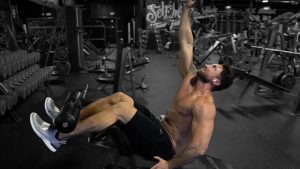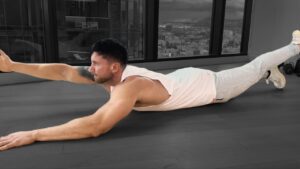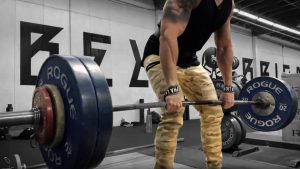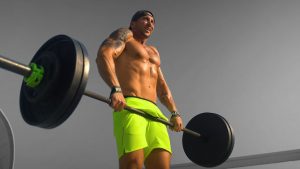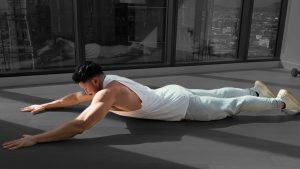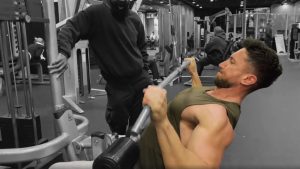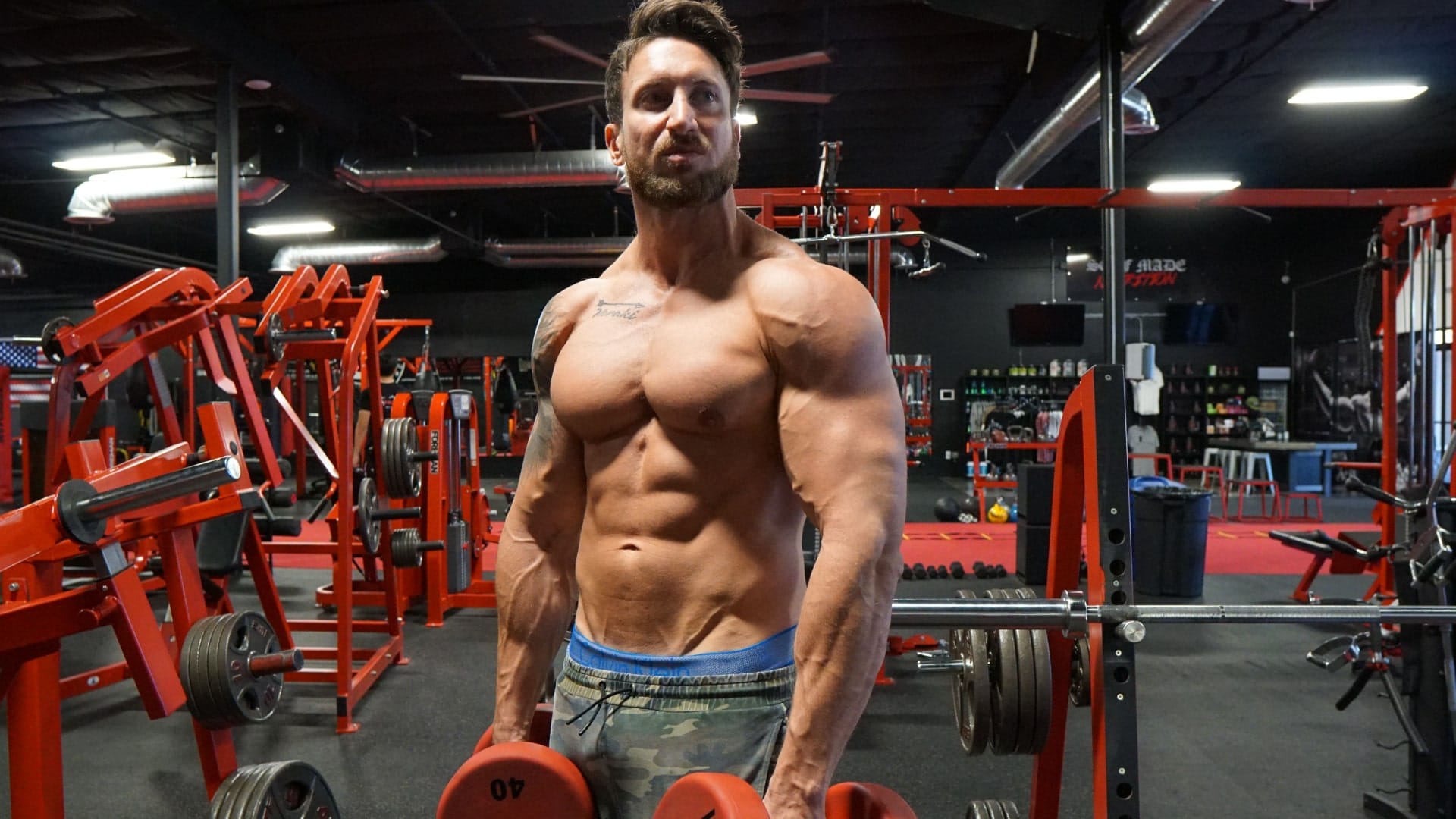
If you want wide shoulders, you have got to be doing the dumbbell lateral raise. This is the single best exercise to hit the lateral deltoid head. That's the side delt that is responsible for shoulder width. In this article, we benefit from the training experience of the Godfather of Bodybuilding, Charles Glass, to learn the optimized technique that will allow you to get the maximum benefits from the dumbbell lateral raise.
Dumbbell Lateral Raise Execution
- 1Stand with your back straight, your knees slightly bent and your feet slightly less than shoulder width apart. Keep your upper body erect and your elbows slightly flexed throughout the entire movement.
- 2Grab a pair of dumbbells using an overhand grip and the palms facing each other. Hold them together about 6 inches in front of your hips.
- 3Keeping your elbows slightly bent, raise your arms out to the side in an arc toward the ceiling until your arms are parallel to the floor.
- 4Slowly lower the dumbbells to the start position.
Charles Glass's Optimized Dumbbell Lateral Raise Tips
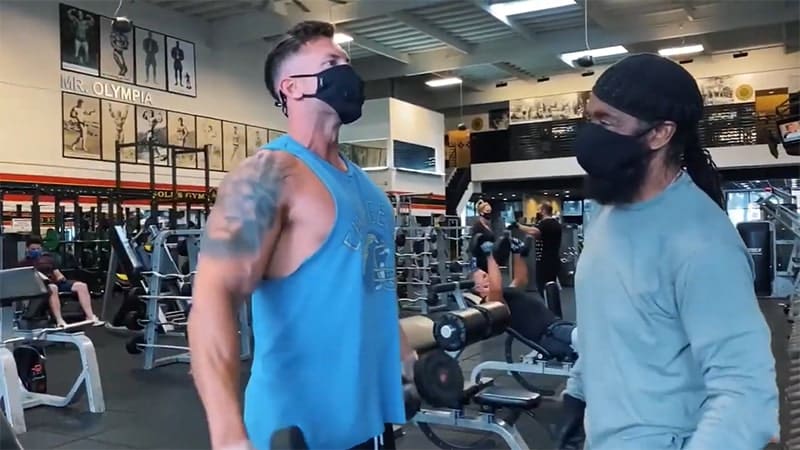
Dumbbell Lateral Raise Benefits
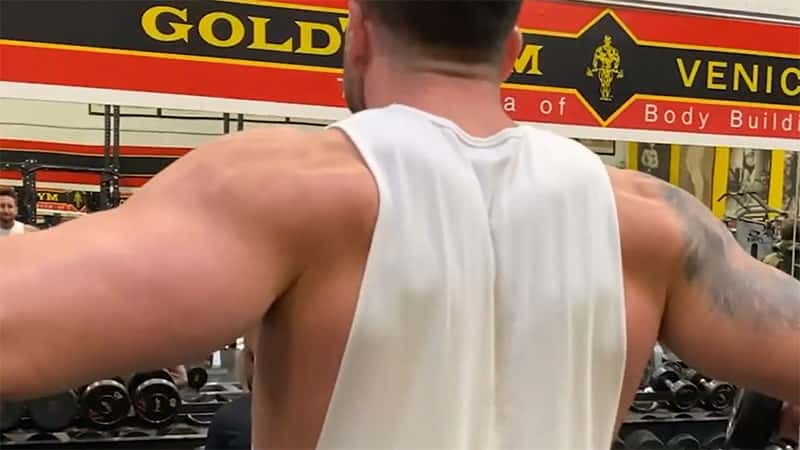
The dumbbell lateral raise allows you to specifically isolate the medial head of the deltoids. Doing so will allow you to develop width to your shoulders. The shoulders are a unique muscle group in that they are made up of three heads with different origin and insertion points to their muscle fibers. This is very different from a muscle like the triceps, which also has three heads but that all have the same muscle fiber origin and insertion points.
That means that you will need to do different exercises to hit the different heads of the deltoids. However, because they have the same origin and insertion points, you cannot isolate the three heads of the delts. The lateral raise is the perfect exercise to work the side delts because it exactly follows the natural anatomical movement of the medial, or lateral, deltoid head.
Best Way to Work the Lateral Delts
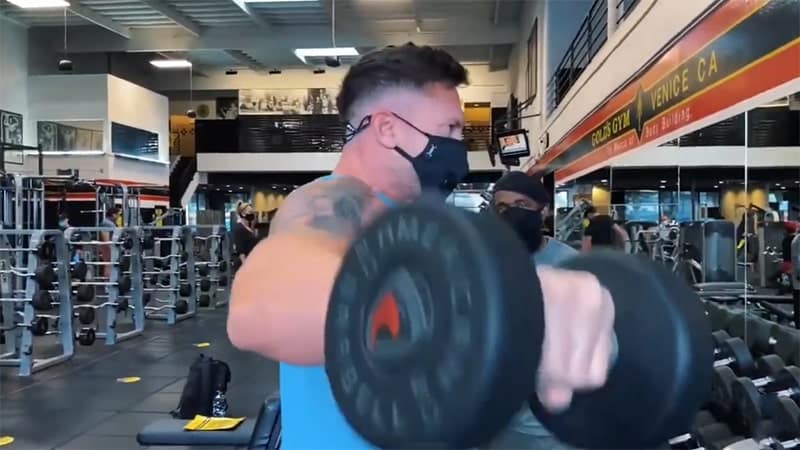
The lateral deltoids do one thing and one thing only; they raise the arm out to the side to the point where they are perpendicular to the torso. It is at this point that the muscle is fully contracted. If you go higher than that, you will be compromising the shoulder joint for no benefit whatsoever. The obvious exercise that aligns with that movement is the lateral raise. The most common way to perform the lateral raise is with dumbbells. Yet, the dumbbell lateral raise is not the best option when it comes to maximizing the growth of the lateral deltoid.
While it does provide you with an ideal movement (so long as you do not raise the arms above perpendicular), the direction of the resistance is not ideal.
Because you are holding a dumbbell in each hand, the direction of resistance is straight down as a result of gravity. Because your arms are parallel with your body at the start of the exercise, there is very little resistance during the first third of the exercise. As the dumbbells get close to parallel with the ground, the resistance progressively increases. As a result, we can classify the dumbbell lateral raise as being late phase loaded. That means that it is easier at the beginning and harder at the end.
All muscles are stronger when they are elongated and weaker when they are contracted. As a result, the ideal resistance curve for any exercise is early phase loaded, where the exercise is harder at the beginning of the movement and easier at the end. This is the exact opposite to what you get with the dumbbell lateral raise.
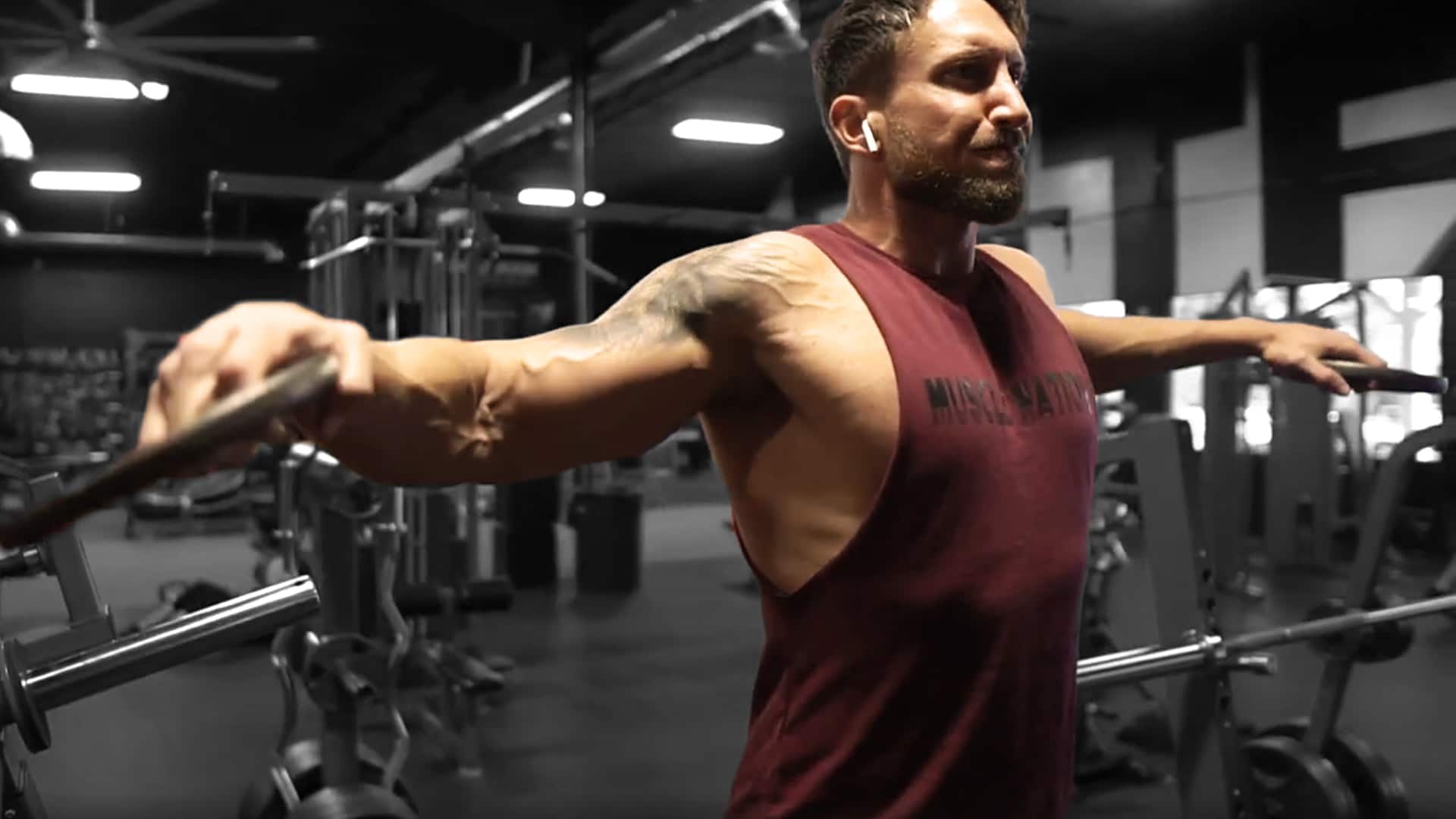
What we need is a version of lateral raises that provides early phase loading, so that you get more resistance at the start of the exercise and less resistance at the end of it. The best exercise to achieve this is the standing side cable raise. When you use a cable machine, the operating lever of the exercise (your arm) is no longer parallel to the resistance. Instead, it is perpendicular. This makes the exercise harder at the beginning and easier at the end (try it and see!).
Yet, even at the top of the movement, when the arm is perpendicular to the torso, there is still about 40 percent of the starting resistance. Contrast that to the dumbbell version which has zero resistance in the starting position of the movement.
Another advantage of doing the cable version of the lateral raise is that you can work each limb independently. This allows you to establish a stronger mind-muscle connection with each side of the muscle. When you do the exercise, stand side on to the cable with your feet shoulder width apart.
When you set up for the standing one arm side cable raise, make sure to set the pulley at the level of your wrist at the starting position. Doing so puts the cable in a perpendicular position to the forearm when you start, maximizing the potential for early phase loading.
For the reasons given, the standing side cable raise is the only exercise that you need to do to fully develop the lateral deltoids.
Complementary Shoulder Exercises
The lateral raise is the only exercise that you need to do for your lateral deltoids. As explained in the section above, the cable version is superior to the dumbbell version. Of course, some people, especially those who train at home, may not have access to a cable pulley machine. Be sure to do either the dumbbell or the cable version of the side lateral raise with every workout.
When you are training your shoulders, think of doing one exercise for each of the three heads. Having established that your side lateral movement is going to be a version of the lateral raise, here are some options for the other two heads.
Anterior (Front) Deltoid Head
Seated Front Deltoid Cable Press
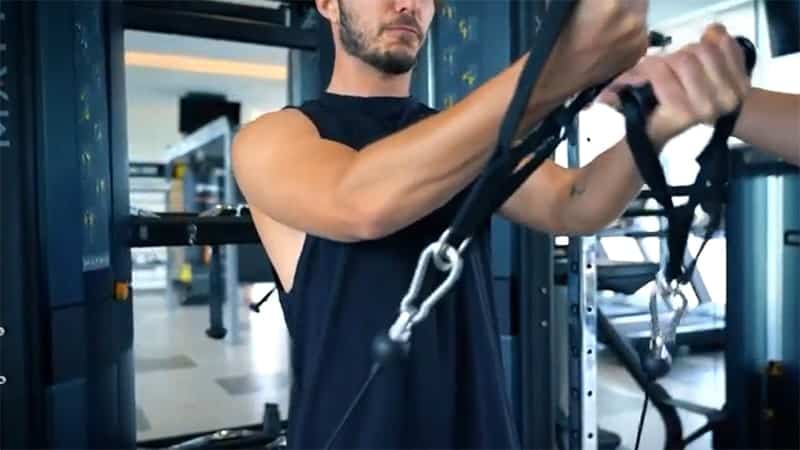
- 1Position a bench with an upright back support about three feet in front of a double pulley cable machine facing away from it.
- 2Set the pulley to be in line with your shoulders when you are seated.
- 3Grab the handles and sit on the seat with an underhand grip so that your palms are facing upward.
- 4In the start position your hands should be at your sides and your elbows behind the torso.
- 5Now, push your arms from and up in a slightly arcing motion to bring them together in line with your sternum.
- 6Lower under control and repeat.
Standing Front Dumbbell Raise
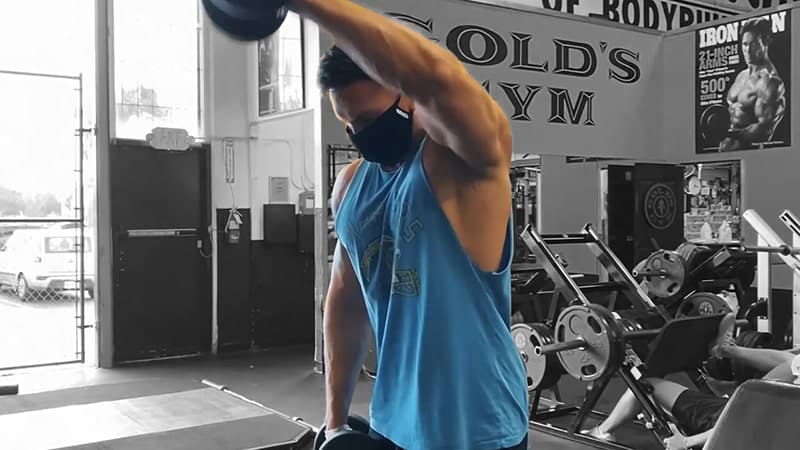
- 1Stand with your back straight, your upper body upright, your knees slightly bent and your feet slightly less than shoulder width apart.
- 2Grab a pair of dumbbells using an overhand grip with your palms facing downward. Allow your arms to hang straight down at your sides, with the dumbbells held around four inches from your thighs.
- 3Keeping your elbows bent throughout the entire movement, raise the right dumbbell from upper thigh level to eye level. Hold for a second and then lower to the start position under control.
- 4Repeat the movement with the left dumbbell, and continue alternating right and left until the desired number of reps have been completed.
Seated Front Dumbbell Press

- 1Grab a pair of dumbbells using an overhand grip and sit down on an upright bench.
- 2Bring the dumbbells up to shoulder level.
- 3Rotate your palms so they are facing forward.
- 4Slowly push the dumbbells directly upward until they touch each other at straight arm's length, and then slowly return the dumbbells to the starting position. Do not lock out your elbows at the top of the movement.
Posterior (Rear) Deltoid Head
Reverse Cable Crossover
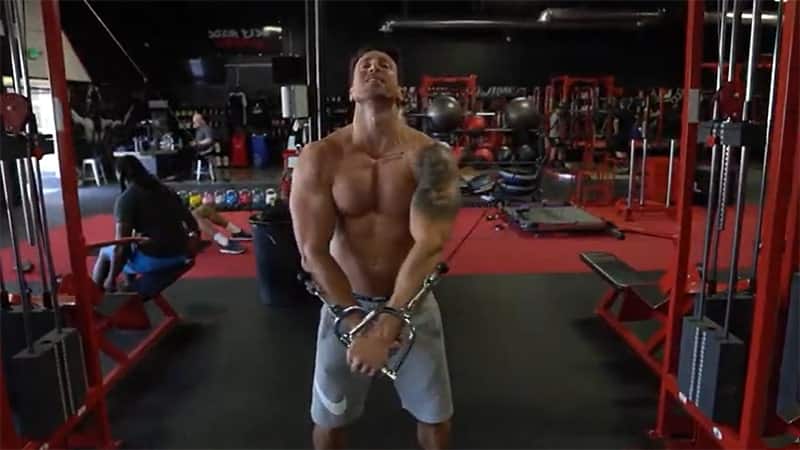
- 1Set the pulleys on a cable crossover machine to the level of your shoulders.
- 2Remove the handles from the ends of the cables.
- 3Set the appropriate pin selector weight.
- 4Grab the cables in cross over fashion in an overhand grip, with your palms down.
- 5Stand in the middle of the cable crossover machine with your hands crossed over at the level of your navel.
- 6Extend your arms back and down to full extension.
- 7Slowly return to the start position and repeat.
Siting Bent Dumbbell Lateral Raise
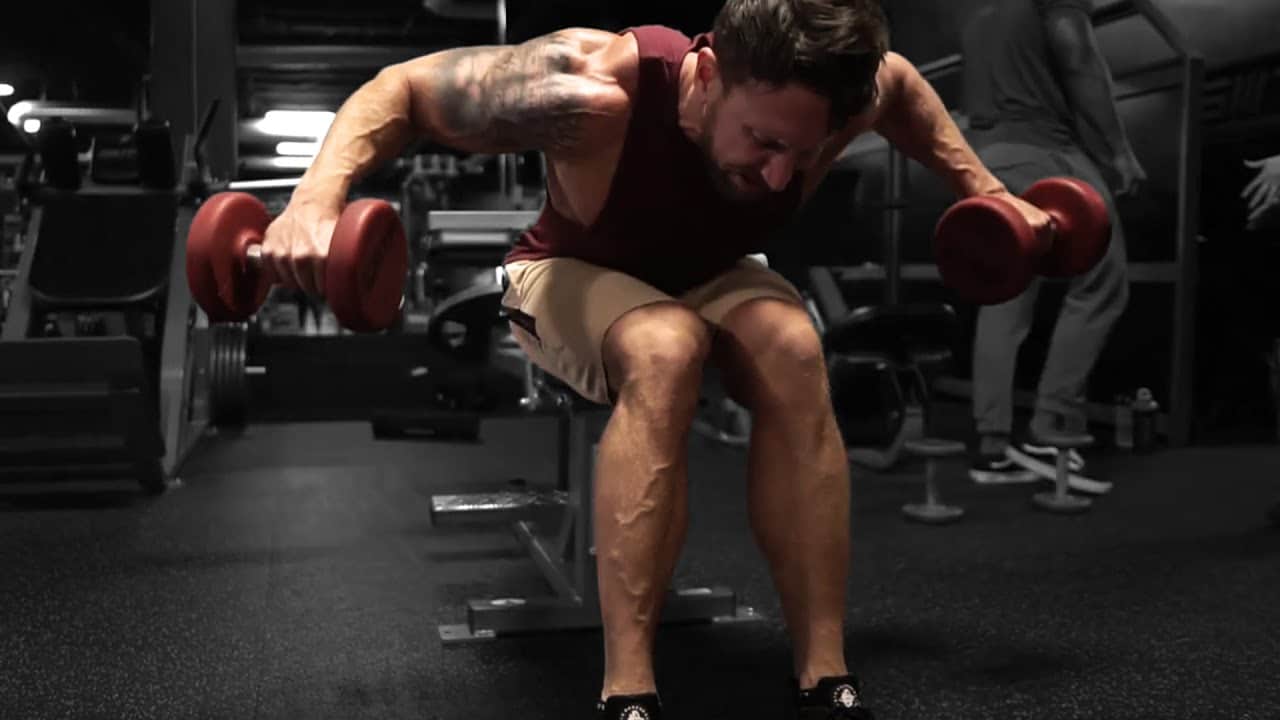
- 1Sit on a bench with your upper body straight and feet shoulder width apart.
- 2Take hold of a pair of dumbbells using an overhand grip, with palms facing each other.
- 3Bend at the hips until your back is parallel to the floor and your arms are hanging down in an extended position, so that your arms are perpendicular to the floor.
- 4Keeping your elbows a little bent, raise the dumbbells laterally in arcing motion until your arms are parallel to the floor.
- 5Slowly lower the dumbbells to the start position.

